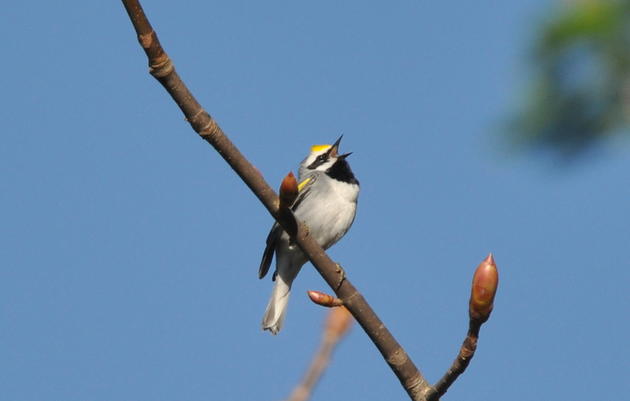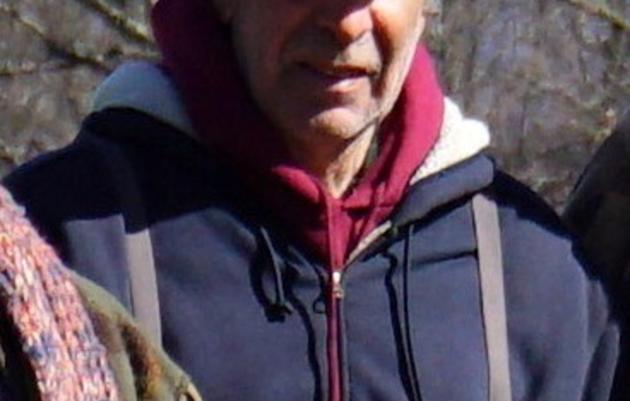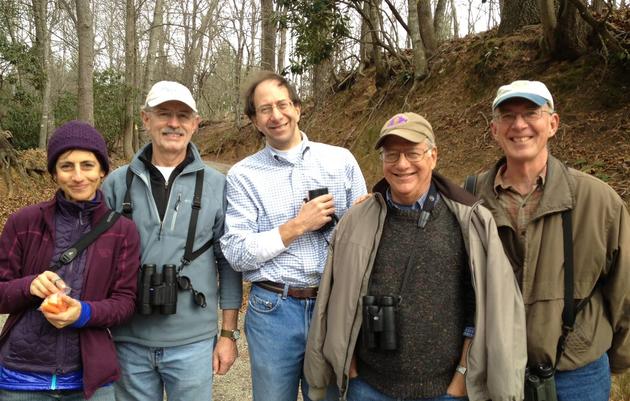Audubon North Carolina’s Putting Working Lands to Work for Birds and People program is supported by the efforts of dedicated volunteers engaging in citizen science and land management activities. One project in the program is to identify privately owned forest lands that can become habitat for the imperiled Golden-winged Warbler. Led by conservation biologist Aimee Tomcho, our volunteers help lay the groundwork for Audubon to identify and engage these landowners.
Meet Russ Oates, Audubon volunteer and private landowner participating in Audubon’s Working Lands Initiative for the Golden-winged Warbler.
Russ is an active volunteer in Audubon North Carolina’s Working Lands program. By participating in our volunteer training program in the mountains, he learned how to survey for and identify Golden-winged Warbler habitat. As a private landowner, Russ also received technical assistance to help him discover how to create early successional forest nesting habitat for the Golden-winged Warbler on his land. Read on to learn what inspired Russ to become an Audubon volunteer.
Inspiration for Ongoing Conservation
As a youngster in the 1950s and 60s, I was fascinated by the beauty of eastern North Carolina's cypress swamps and the incredible things that lived among us. When I was in early grammar school, my father used to carry me on his back as he waded through the coffee-colored waters among the giant cypress, gum and oak trees as we hunted ducks and deer.
One fall we were devastated to discover that the beautiful swamp we loved so much had been clear-cut. It was soon after that I learned of the demise of the ivory-billed woodpecker and began to understand the impact that habitat loss can have on species with specialized habitat needs.
This was a transformative experience for me and gave me a lifelong desire to do whatever I could for wildlife habitat conservation.
The dramatic decline of the Golden-winged Warbler is another example of a species imperiled by the loss of specialized habitat. Ironically, the warbler's limiting habitat appears to be early successional forest, the exact opposite of the problems faced by the Ivory-billed Woodpecker. The good news is, unlike the woodpecker's habitat, which required decades or centuries to develop, the Golden-winged Warbler’s habitat can be restored in just a few years.
This presents an unprecedented opportunity for motivated people to make a big difference relatively rapidly for a bird in need.
At Work With Audubon North Carolina
I am a "newbie" volunteer and am still getting my feet on the ground but so far, I have taken the one-day Golden-winged Warbler habitat training-course and I have participated in the warbler breeding survey blitz of Yancey County. Both events are organized by Aimee Tomcho, Audubon North Carolina’s energetic and inspirational conservation biologist.
In my first year, I’ve been learning more about the birds, their habitat needs, how to survey them, and the areas of the county that have potential for supporting these birds in need. Looking into Year 2, I hope I learned enough to be even more effective! I hope over the next year to help scout out likely breeding habitats and areas that could be improved for breeding habitat, contact landowners, and educate them on the crisis facing the warblers and their potential role in helping the species.
Benefits of Becoming an Audubon Volunteer
Volunteering for the Golden-winged Warbler group has given me the opportunity to meet some very dedicated conservationists from various walks of life. They are fun to be around, teach me new things every time we go to the field, and inspire me with their selflessness and enthusiasm.
I love being in the woods, learning to look at the land from the bird's perspective, and seeing the potential of what could be accomplished. It is encouraging to know that restoration of the Golden-winged Warbler is very feasible and it's great to be a part of the effort.
Keys to Success
I think a key to success for this effort in our community is helping landowners understand the problems facing these birds, and encouraging them to understand the land management techniques that can make a difference. Landowners planning to sell their timber can work with biologists and foresters to leave sufficient mature trees to provide adequate singing perches and manage small areas of their acreage in earlier successional stages for longer-term warbler breeding habitat.
Landowners that have abandoned farmland can also maintain some areas for warbler breeding habitat. Power companies can manage power line rights of way to better support warblers too. It is critical that the volunteer group seeks out these opportunities and works with the landowners.
Are you interested in becoming a volunteer? My advice would be to not be shy.... Go for it and you could meet some great people, learn a lot and make a difference for the birds.
Get involved with citizen science activities and volunteer your time to support Audubon’s Putting Working Lands to Work for Birds and People initiative and the efforts to restore Golden-winged Warbler habitats. Contact Aimee Tomcho to learn more.







